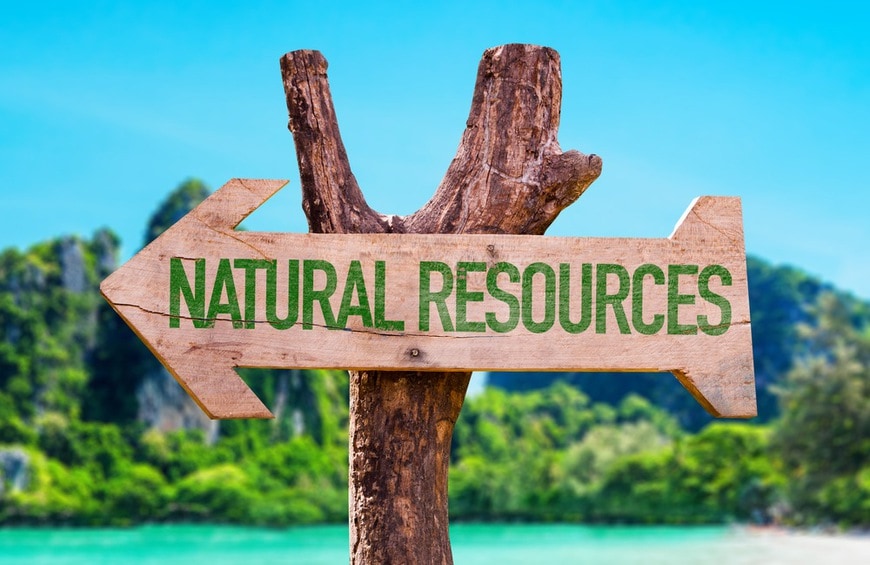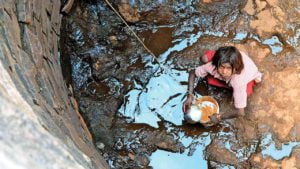Forestry can be understood as the science of managing, planting, using, conserving, and repairing forests. Forest is a house to many different living organisms. Forests can be considered as a precious resource that is provided by Mother Earth. Also, All the organisms living in forests are interdependent on each other.

What is Forestry?
Forestry can be understood as the science of managing, planting, conserving, repairing forests, and wisely using forest resources. This is a very important and upcoming field of study.
Forestry is so much more than just trees. They deal with animals, insects, plants, and other resources, as well as human needs. Forests play a major role in human life, and thus it is important to protect and manage them.
Types of forests
Tropical Forests
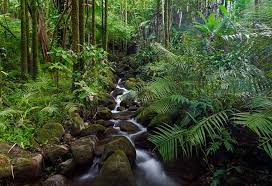
Tropical rainforests consist of a great diversity of species in the ecosystems on earth. They usually do not experience winter and receive around 100 inches of rain yearly.
Due to the high temperature and moist air, decomposition happens at an incredibly fast rate in these forests. High levels of rainfall normally lead to in leaching of nutrients from the soil, and this is why the soil in tropical rainforests is often poor in nutrients.
Tropical rainforests are dominated by trees between the height range of 82 and 115 feet. The sun barely reaches the lower levels of the forest, due to the dense-growing trees. Most animals that live in the tropical rainforests prefer living in the trees. There is a large variety of birds, bats, snakes, and plants such as vines, mosses, orchids, and ferns in these forests.
Some types of tropical forests are
- Evergreen: Evergreen forests receive rain all year round and do not have dry seasons
- Dry: These forests have a long dry season in which trees lose leaves
- Seasonal: They have evergreen vegetation along with short dry seasons
- Tropical and subtropical coniferous: These forests have dry as well as a warm climate with conifers plant which adapts to the weather.
- Sub-tropical: Sub-tropical forests are located at the north and south of tropical forests.
Temperate Forests
The Temperate forests are of two types :
- Temperate deciduous forests
- Temperate coniferous forests
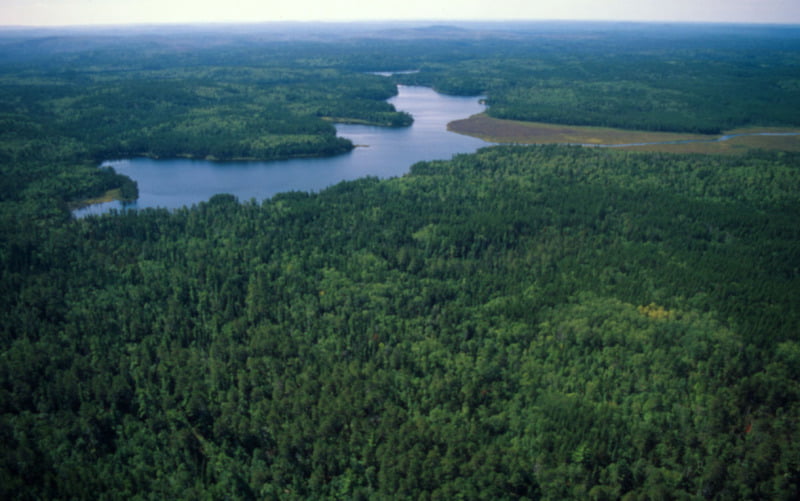
The Temperate Deciduous Forests
One can find the Temperate Deciduous forests in China, Canada, Japan, Russia Western Europe, and parts of the United States. They experience four seasons and usually rain during spring, summer, and fall. These forests receive 30 to 60 inches of rain annually. During winter, it snows in this area.
Since the soil is very fertile, plants like mosses, ferns, and wildflowers grow on the bottom of the forest. The forest grows a vast species of plants, including evergreen plants like fir and pines. Due to the cold weather, animals such as red fox, cardinals, hawks, and woodpecker survive here.
Temperate Coniferous Forests
One can find temperate coniferous forests in the coastal regions. The winters are usually mild, but the rain is heavy. Moreover, one can also find them in in-land mountainous regions such as Southern Japan, New Zealand, Parts of the United States, Canada, and North-western Europe.
They have a moist climate and the plants grow throughout the year due to the heavy rains. The annual rainfall is between 50 to 200 inches in temperate Coniferous Forests.
The Soil is usually rich in nutrients due to the presence of a thick layer of decaying matter.
Interestingly, evergreen conifers dominate these conifers. Other trees and plants such as cedar, pine, Douglas fir, redwood, and spruce also grow here. Some deciduous trees like maple, mosses, and ferns also grow here. Animals that stay in these forests are spotted owls, deers, marmot, black bears, etc.
Boreal Forests
Boreal Forests are usually found in Siberia, Scandinavia, Canada, and Northern Asia. Also, a majority of the boreal forests can be found in Scandinavia. Boreal forests are also known as Taiga forests in North America.
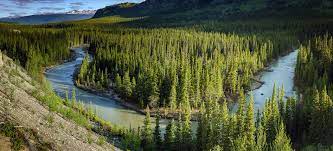
Boreal forests have short summers and rather long winters. Moreover, the precipitation is around 15 to 40 inches annually, which is usually in the form of snow. Due to the cold temperature, these forests have thin soil, which is because of the slow rate of decomposition.
Trees in Boreal forests include pine, spruce, and fir, while the bottom of the has limited vegetation. Animals that live in these forests have thick fur and they are adapted to the weather. Additionally, deer, moose, elk, lynx, snowshoe hare, caribou, wolves, and wolverines are some animals that live in the Boreal Forests.
| Type of forest | Sub-types | Temperature | Animals | Plants | Rainfall |
| Tropical Forest | Evergreen Dry Seasonal Tropical and Subtropical coniferous Sub-tropical | High temperature Moist air No winters | bats, deer, lemur, elephants, chinchona, monkeys, | ebony, rosewood, mosses, mahogany, cinchona, bamboo, sal, pine | 100 inches |
| Temperate forests | Temperate Deciduous Forests | All four seasons | Red fox, hawks, woodpeckers | Mosses, ferns, wildflowers, fir, pines | 30-60 inches |
| Temperate forests | Temperate Coniferous Forests | Mild winters, heavy rains Moist climate | Owls, deer, marmot, black bears | Cedar, pine, redwood, spruce | 50-200 inches |
| Boreal forests | High Boreal Middle Boreal Southern Boreal | Cold temperature | Deer, moose, elk, lynx, wolves, wolverines | Pine, spruce, fir, jack pine, white birch | 15-40 inches |
What are the uses of forest resources?
Provides food for Man
Forest also provides fruits, vegetables, and seeds to man for consumption.
Provides Timber
Wood from Mahogany, Cedar Wood, Pine, Maple, Teak, Afara, etc is used for constructing houses, bridges, canoes, furniture, etc.
Medicinal Purpose
Some trees in the forest have medicinal properties. Thus forests are a good source of medicinal herbs, grasses are useful in the treatment.
Provides Raw Materials
Most of the products manufactured make use of raw materials from the forests, such as wood, fuel, gums, fiber, etc. These are used by manufacturing industries to produce finished products.
Works as a Tourist Attraction Site
Forests are used as reserve centers for nature lovers. Some parts of the forests and wildlife are open to people to visit. It also generates income for the country. This not only provides as a tourist attraction but helps generate income for the country.

Provides Employment Opportunities
Forests provide a vast number of employment opportunities for people in the country. For example, they can work as forest guards, hunters, scientists, tourist managers, etc.
Protective Uses
The forest protects the soil from erosion, as well as from heavy winds.
Can be a source of revenue to the Government
The government can generate revenue by issuing licenses to tourist managers, contractors, etc.
Serves as Educational and Research Purposes
Some students make use of the forest for research purposes. Also, forest provides research on different plants and animals successfully, which enables the students to comprehend more.
What are the most important things about forests?
Forests help the earth maintain the water cycle
Plants absorb water from the soil through their roots. Transpiration is the process of releasing excess water by plants into the atmosphere in the form of water vapor. The process in which water vapor condenses to form clouds can be understood as condensation and Precipitation is the process of moving clouds to land due to the breeze. All these processes together form the water cycle and hence forests play a significant role in continuing the water cycle. Forests help maintain the temperature and oxygen level in the atmosphere. Plants release oxygen during photosynthesis and take in carbon dioxide. Forests being a huge reserve of plants and trees play a major role in the eco system.
Forestry provides forest goods
From the start, forests have been the number one source for a majority of goods that humans use. Even today, a majority of the goods we use come from the forest. Hence, these goods might be directly used, or indirectly used. Forestry is mainly associated with timber, whose uses are multipurpose. Non-Timber Forest Products like medicinal herbs, resins, leaves, bamboos, etc are also used today.
Forestry helps to reduce climate change
Forestry is amongst the top solutions to helping and adapting to climate change. Deforestation and forest degradation contribute to an increase in CO2 annually. Deforestation and forest degradation does not help forestry achieve their goals. Forestry deals with the management of forests by conserving, protecting, and utilizing the resources sustainably. Moreover, forests help preventing global warming. Therefore, when there is an increased amount of carbon dioxide (greenhouse gas) in the atmosphere, it results in global warming.
Forestry can help provide water
An estimated 75 percent of the freshwater used for purposes such as domestic, agricultural, industrial, and ecological are supplied by the water present near the forest.
Presently, approximately 80 percent of the world population is currently facing water issues. Forestry helps regulate the water cycle and continuous supply of fresh water.

Forestry can help build a sustainable future
The survival of the human species is dependent on the survival of forests. Forests consist of almost every essential on earth such as air, water, food, and shelter. Forest-based resources are extremely scarce and inaccessible to many people today due to deforestation and human activities. Therefore, at the rate at which human activities affect the ecosystem, the future of life on earth does not seem very pleasant.
With the help of forestry, deforested areas are being revived through plantations and other measures.
Forestry helps maintain biodiversity
Forestry is extremely important for maintaining the rich diversity of organisms that are present in the forests. Forests in each zone are rich in native flora and fauna. Due to human activities, the habitat of the flora and fauna are affected. This has caused many species to go extinct. In addition, one of the aims of forestry is to bring back or maintain the existence of different species.

Forestry is important in Urban planning
Urban forestry is a sub-discipline of forestry that addresses the needs and issues of urban spaces. This plays a major role in filtering the air, water, maintaining aesthetics, conserving energy, providing shade and habitats for wildlife.
Urban Planning is also important for other reasons such as health benefits, community enrichment, etc. Subsequently, it includes all trees or groups of trees located in urban areas.
Forestry and agriculture are interrelated
Forestry is important to agriculture as it helps stabilize the soil, regulate climate increase groundwater recharge, provide shade, improve nutrient cycling, etc. Moreover, the combination of agriculture and forestry is known as agroforestry. The agricultural crops are grown along with trees on the same land. This practice is effective in increasing productivity, soil nutrients and ensuring the land remains sustainable.
Forestry has recreational purposes
Modern life has created mental as well as physical stresses in people. Also, nature is a place where people retreat for a break. In addition, activities like mountain biking, hiking, rock climbing, etc are also popular these days. Forestry practitioners focus on developing forest areas for recreation and tourism. Therefore, this is an environment-friendly way to generate revenue for the country.
Forest economy
We have discussed the range of goods and services that forestry helps to obtain from forests. All these goods and services are a source of revenue to several industries like wood industries, paper industries, tourism industries, etc are dependent on forestry. Also, there are forestry policies and practices that make responsible and sustainable use of forest resources have the potential to transform the economies of communities as well as countries.
Why is forestry important to the economy?
Forests provide jobs for people across the world
Forests provide jobs for people all around the world. The jobs can range from gatherers, woodchoppers, hunters to scientists, forestry managers, and biologists. Hence, each aspect of the forest can be studied and provides jobs. In addition, forests are also used as areas of study and research.
Habitats for biodiversity and livelihood for humans
Forests are home to 80% of the world’s biodiversity. They are also a source of livelihood for many different human settlements, including millions of indigenous communities.

Multiple-uses
The forests of the world provide other resources apart from timber. Industries, companies and the government make use of these resources. They are used to get raw materials, recreational use, breeding of species, and agriculture.
Effects of Deforestation
Loss of Biodiversity
There has been a significant amount of loss in biodiversity over the years due to deforestation. Many species such as Passenger Pigeon, Great Auk, Pyrenean Ibe, Stellers Sea Cow, Tasmanian Tiger have gone extinct. Many species such as tigers, Snow Leopard, seas turtles, pandas, etc are endangered, and will soon be extinct.
Disrupted housing
Due to deforestation, indigenous tribes and residents are expected to move away. This affects their lifestyle and sources of livelihood. In addition, parts of forests are made restricted lands, which does not allow them to practice hunting and gathering.
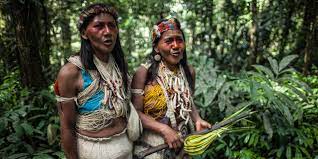
Climate change
Climate change is the term used to describe global warming or cooling, according to how it affects our planet. There are many factors that have been considered when scientists try to determine what exactly causes climate change, but if you take a look at the scientific reports and research, it’s easy to see that we need to make a change in order for the earth’s temperature not to rise drastically. Deforestation increases the amount of CO2 on earth annually.
Flooding and soil erosion
Deforestation leads to increased flooding and soil erosion. Trees usually hold the soil in place and avoid any major movement of soil. However, when there are no trees, the soil gets loose. This can cause soil erosion. When there is heavy rainfall, the loose sand starts to move and causes floods.
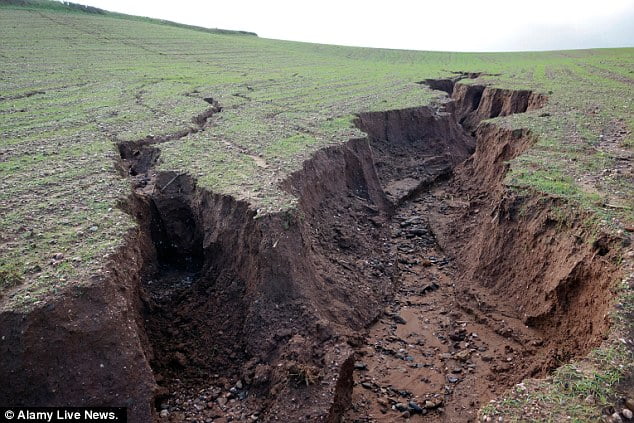
EFFECTS OF DEFORESTATION – Download
Conservation Of Forests
The United Nations (UN) has estimated that the world is losing millions of hectares of forest each year. According to the SOFO 2018 report, the problem of deforestation causes almost 20% of total greenhouse gas (GHG) emissions, which is more than the greenhouse gases caused by transportation.
Climate change also affects the land for agricultural purposes, threatens terrestrial biodiversity and the survival of indigenous forest communities and wildlife. It also affects people worldwide who obtain their food, medicine, and energy from terrestrial ecosystems.
Forest conservation is important due to its positive effects against global warming and for the protection of the ecosystem. If the forest areas are Safeguarded, and there is proper management of natural resources, it can help undo the environmental issues caused by human beings.
The forests are also a source of clean air and home to more than 75% of terrestrial animals and plants, as well as natural pollinators. According to the UN, all of them help generate more than $200 billion annually for the global food industry.
Careers in Forestry
Some of the careers that can be pursued are as follows
Soil Scientist
A soil Scientist looks at the composition as well as the health of soil, land, and water. They look at forests, soil, and the changes the land went over the years. They work in the lab, and also in the forests when required.
Forester
The forester is responsible for protecting and, regenerating forests, protecting the wildlife habitats, resolving issues, fighting wildfires, management, and so on.
Wildlife Biologist
Wildlife biologists study the actions, biology, habitation, and environment of a variety of animals in the wild. They can also work for the state or federal government in the conservation of forests, research positions, the private sector. They can also work in zoos, community centers as well as the educational sector.
Dendrologists
Dendrologists usually research the history, life span, measuring, classifying the varieties of trees. They also analyze and study ways and means to come up with solutions for afforestation etc.
Environmental Consultant
Environmental consultants work in both private and government sectors. They assist companies to make full use of the natural resources while ensuring less or no environmental damage.
Ethnologists
An ethnologist studies and understand the process of evolution, behavior, biological functions of the organisms, etc. of an organism in its natural environment. Ethnologists can help design healthy and habitable areas for animals who reside in zoos, aquariums, and laboratories and also study animal behavior.
Animal damage control specialist
Animal damage control specialists are responsible for conducting and coordinating look after wildlife damage management operations and providing technical assistance in providing any form of control of various types of wildlife species within a geographical area too. They help reduce or eliminate damages from overpopulation or the natural habits of wildlife within that geographical area.
Entomologists
Entomologists specialize in the study and control of diseases caused by various insects and pests.
Silviculturists
Silviculture is an aspect of forestry that refers to the growth of plantations that yield periodic harvests. Silviculturists study, and analyze the requirements for the forests.
Forest Range Officers
Forest range officers look after public forests, sanctuaries, botanical gardens, etc. They have conservators, loggers, and other subordinates who work with them.
Wildlife forensics officer
Wildlife forensic officers conduct laboratory analysis of samples related to. They look into cases such as animal cruelty, poaching, smuggling, animal cruelty, bioterrorism, oil spills, or other ecological issues.
Zoo curators
Zoo curators are responsible for animal welfare in the zoos and also undertake conservation programs. They play an important role in the administration of zoo functions and captive breeding programs of species.
Frequently asked questions
What do you know about forestry?
Forestry can be understood as the science of managing, planting, conserving, repairing forests, and wisely using forest resources. Forestry is so much more than just trees. They deal with animals, insects, plants, and other resources, as well as human needs.
Why is forestry important to the economy?
Forestry helps generate revenue by providing jobs to people, helping industries receive raw materials, as well as help, provide forest resources.
What are the 10 most important things about forests?
Forests provide food, water, and shelter, along with timbre and other materials. They are also a source of revenue for the government. In addition, they foster wildlife and provide shelter for indigenous tribes.
What are some career opportunities in Forestry?
Some careers in forestry are Forest and Woodland Management, Forest Ecosystem Management, Forest Resources Management, Wildlife Sciences, Forest Products, Wood Science and Technology, Conservation Biology, and many more.
Who is a Soil Scientist?
A soil Scientist looks at the composition as well as the health of soil, land, and water. They look at forests, soil, and the changes the land went over the years. They work in the lab, and also in the forests when required.
How do forests serve a recreational purpose?
Modern life has created stresses in people, and nature is a place where people retreat for a break. In addition, activities like mountain biking, hiking, rock climbing, etc are also popular these days.
What are the effects of Deforestation?
The effects of Deforestation include Loss of Biodiversity, disrupted housing, increase in greenhouse gases, and Climate change.

Bottomline
Today, recreation in forests has started to grow, especially for those who need a change of scene, fresh air, freedom, stress relief, and a break from regular life. It is thus important to ensure that people do not damage the forest environment. There are many popular outdoor recreation activities that make use of the forestland such as hunting and fishing, camping, hiking, mountain climbing, photography, and nature study.
In addition, it is important to preserve forests to save wildlife, control climate change, as well as the environment.
Share with your friends

